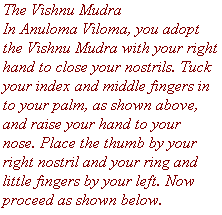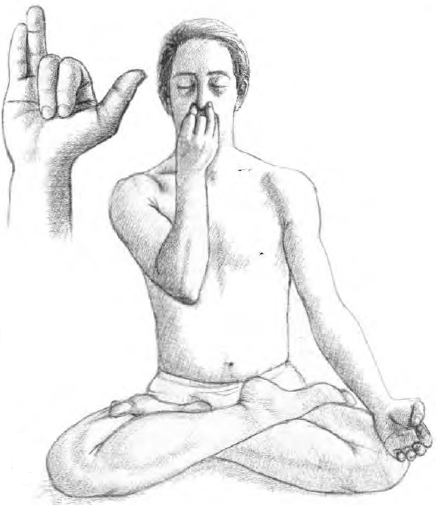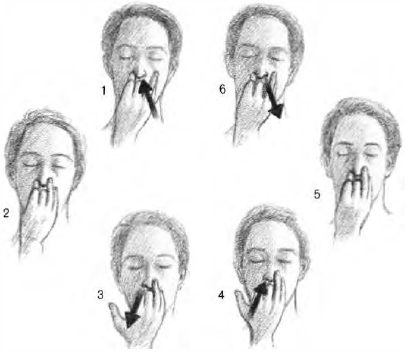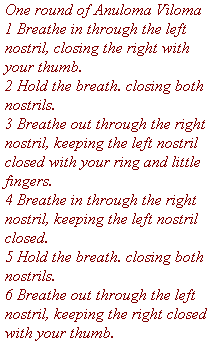

Pranayama (Breath Control)
Pranayama, or breath control, is the Fourth Limb of ashtanga, as set out by Patanjali in the Yoga Sutra.
Pranayama is the fourth 'limb' of the eight limbs of Ashtanga Yoga mentioned in verse 2.29 in the Yoga Sutras of Patanjali. Patanjali, a Hindu Rishi, discusses his specific approach to pranayama in verses 2.49 through 2.51, and devotes verses 2.52 and 2.53 to explaining the benefits of the practice. Patanjali does not fully elucidate the nature of prana, and the theory and practice of pranayama seem to have undergone significant development after him. He presents pranayama as essentially an exercise that is preliminary to concentration, as do the earlier Buddhist texts.
Many yoga teachers advise that pranayama should be part of an overall practice that includes the other limbs of Patanjali's Raja Yoga teachings, especially Yama, Niyama, and Asana.
Anuloma Viloma
In this alternate nostril breathing exercise. you inhale through one nostril,
retain the breath, then exhale through the other nostril in a ratio of 2:8:4.
The left nostril is the path of the nadi called
Ida, the right nostril that of Pingala. If you are really healthy, you will
breathe predominantly through the Ida nostril for about one hour and fifty
minutes, then through the Pingala nostril. But
in many people this natural rhythm is disturbed. Anuloma Viloma restores an
equal flow balancing the flow of prana in the body. This is essential if you are
to succeed in bringing prana up Sushumna, the central nadi. One round of Anuloma
Viloma is made up of six steps, as shown below. Start bv practising three rounds
and build up slowly to twenty rounds, extending the count within the givel'l
ratio.



